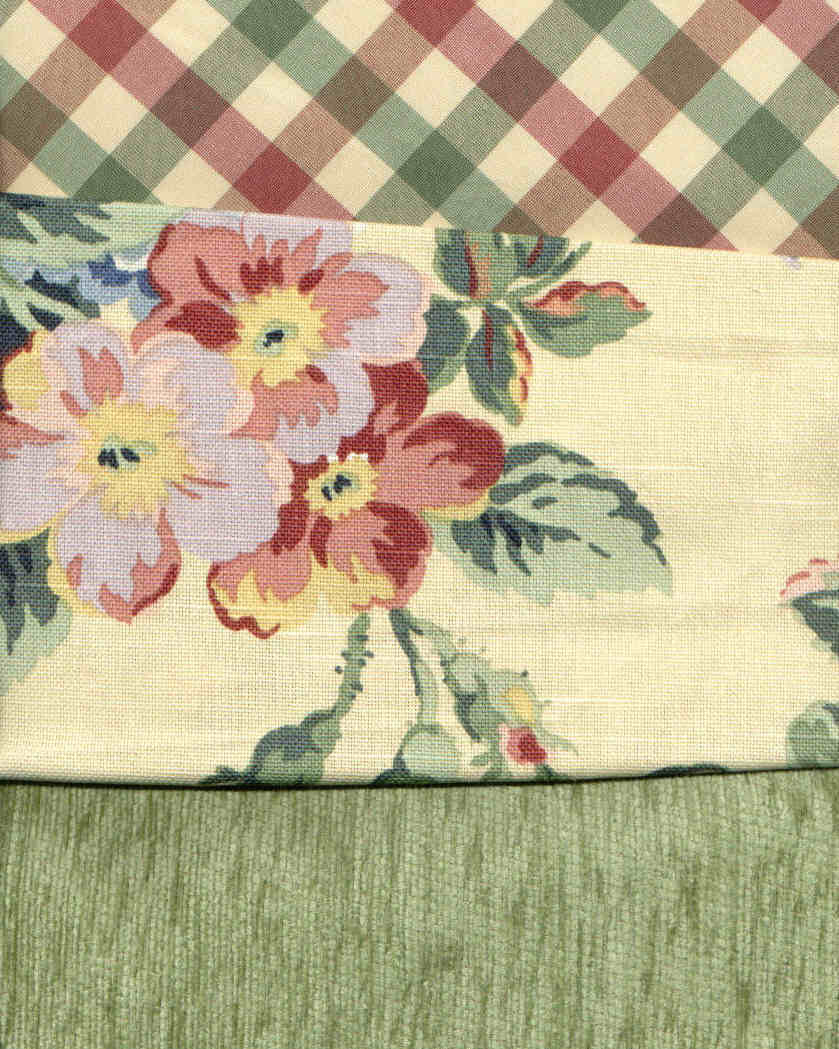

1) Color
The first element to consider when coordinating fabric is the obvious - color. The colors of the fabrics must present a cohesive package that compliment each other - not compete.
2) Pattern
The second element is pattern. Fabrics fall under one of two patterns - curvy or straight. A sample of a curvy pattern is a chintz. There is no set pattern, but more of a "wave" of color and design. An example of a straight pattern is a plaid. There is a definite pattern that is easily recognizable throughout the fabric. What about a solid pattern such as a brocade or velvet? All fabrics which feature a nap or raised pattern, etc, are considered curve fabrics.
3) Size
The third consideration is size. When speaking of size, I am referring to the size of the overall pattern, and not the actual width. Sizes of fabric patterns fall under small, medium or large categories. For example, I will use a cabbage rose chintz to further explain. When you look at a fabric such as this, you would immediately assume that the fabric is considered a large print. This may be true. But, what happens when you pair this chintz with a large plaid? The "large" chintz fabric becomes a "medium" pattern. In other words, the size and scale of the fabric is determined by the other fabrics.
|
Continue to The Three Steps: |